In addition to the HOBO temperature logger in each vernal pool, we have a water depth data logger installed in the two pools we are watching this year. We have looked at the data from late January to early April and the loggers are continually recording new data every 30 minutes.
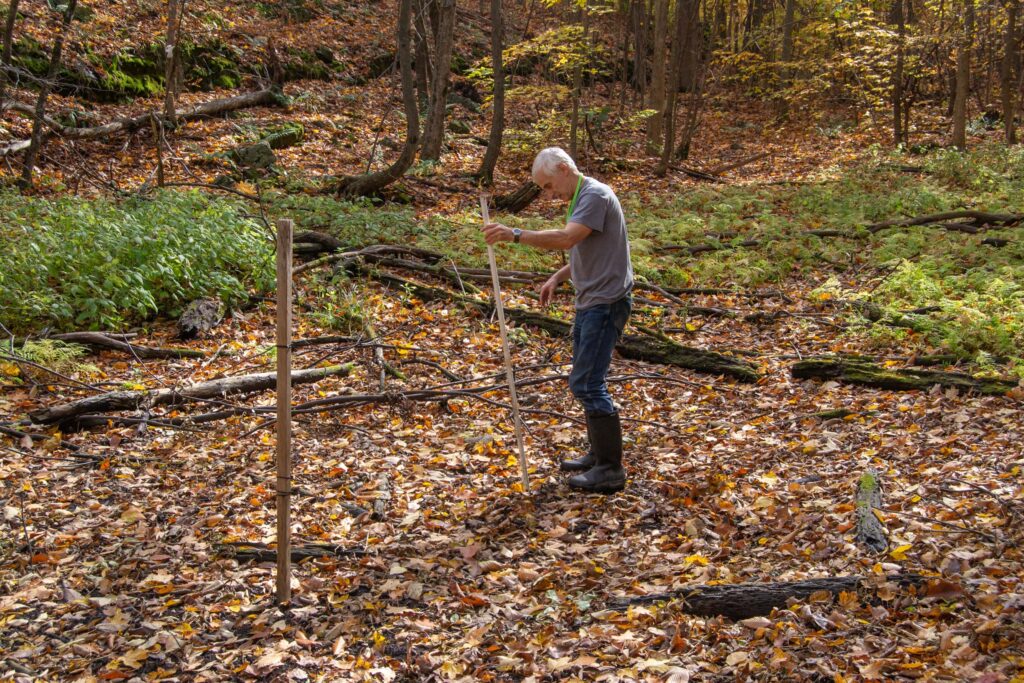
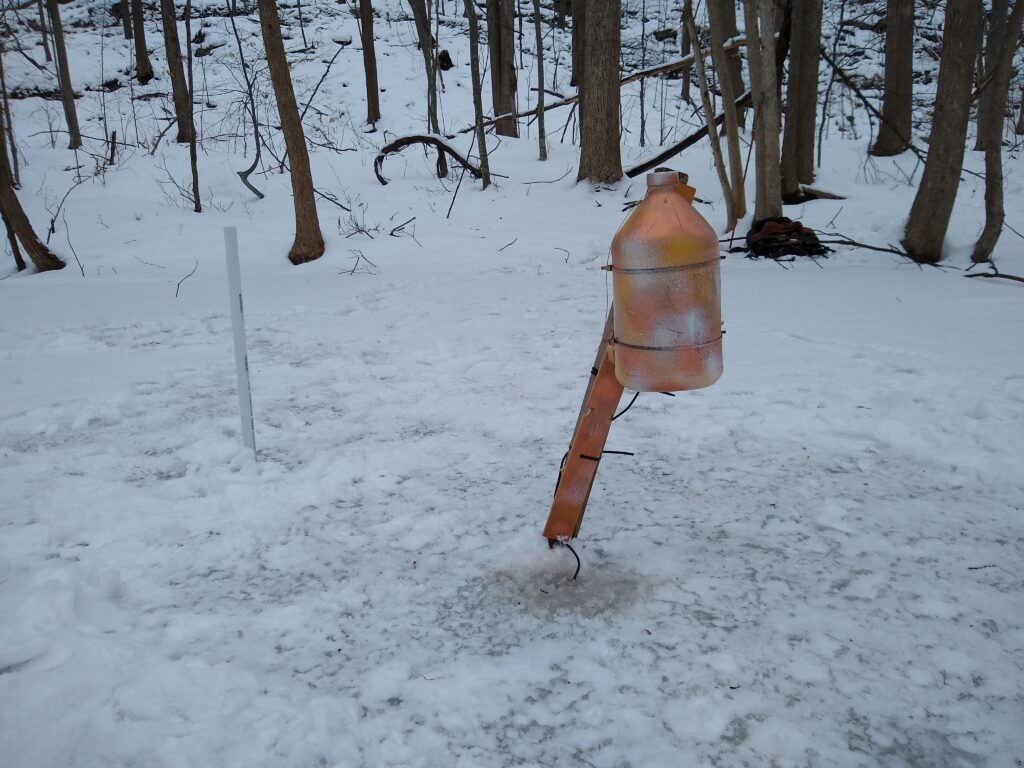
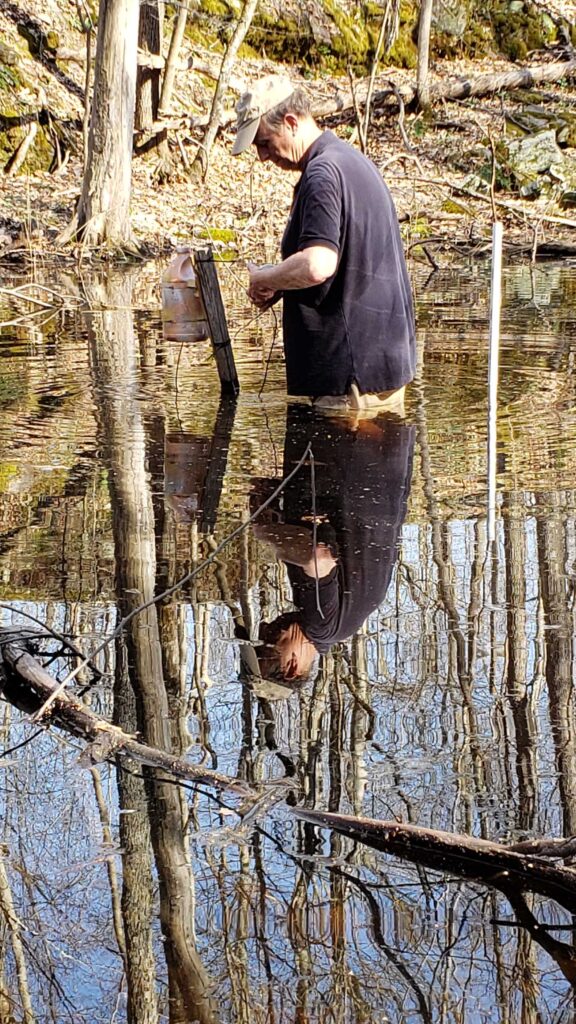
At the old vernal pool (NEW370) near East Middlebury, a water depth logger was in place all winter. It got new batteries and SD card on October 23, 2020 when the pool was dry. On January 20, 2021 the pool was full and when I walked out on the ice to swap the card and batteries I hoped to have a record of the pool filling up over three months. But the SD card had failed and there was no data on it. The logger was restarted with new batteries and a fresh SD card. When we visited next on March 13 to deploy the new AudioMoth, we found the logger partly submerged (see photo below). I assumed this was terminal because there are two electronic sensors exposed under the plastic jug and outside of the peanut butter jar where the logger itself is. I did not retrieve the logger that day because the ice had six inches of water on top of it and a skim of ice on top of that. I returned on April 9 after the ice was gone and brought the soggy logger home. I assumed it would need to be replaced.
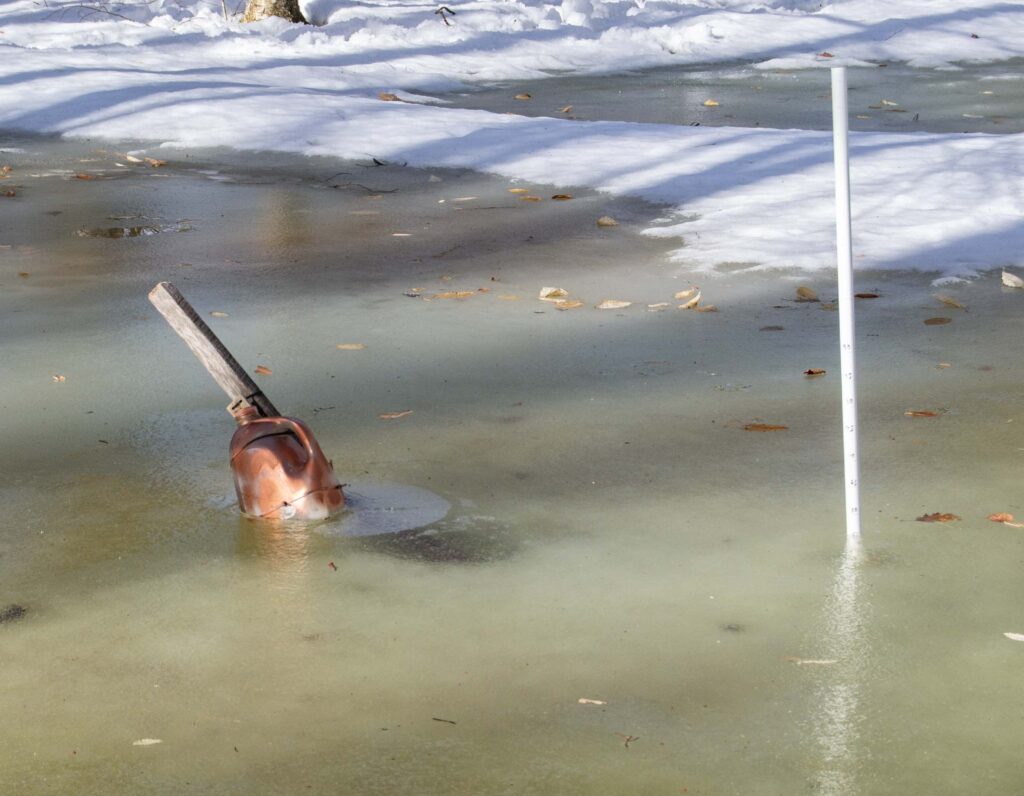
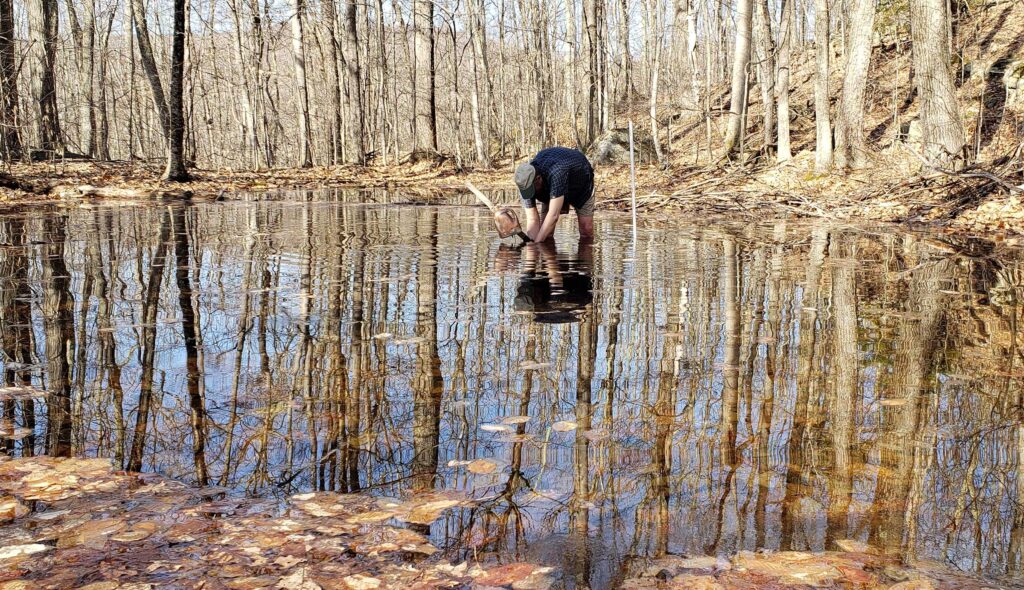
It was pretty damp inside the peanut butter jar where most of the electronics live, but the logger was still running and saving data. Even the sensors which I thought had been submerged still worked (so I assume they were not submerged). The water depth data were meaningless because the ultrasonic rangefinder had moved relative to the pool bottom, but the water temperature data and the air temperature, humidity, and barometric pressure data seemed valid. I dried everything out, tested it for a day, and installed it back in the pool on a newly emplaced wooden pole.

Amphibian migration was unusual this year in the Champlain Valley. On March 11, after two weeks with no rain but warm days, the ground was wet with snow melt, the air was warm, and blue spotted salamanders were seen crossing Morgan Road in Salisbury under a cloudless night time sky. Salamanders might have moved to the MLS619 vernal pool on this night (icon in Figure 1). Note the 17 cm (6.7 in) increase in water depth on March 11, 12, and 13. That was snowmelt either on top of the ice or floating the ice.
It was mostly warm and dry for the next two weeks. The pool was ice covered until at least March 23 (we have photos), but on March 26 some evening rain coaxed lots of frogs and salamanders to the breeding grounds in the Champlain Valley and probably to this pool. I assume the audio recordings will confirm that wood frogs were calling at this pool on March 26 and the following days.

As with the Snake Mountain pool, March 11 was an important day at the East Middlebury pool (Figure 2). A series of increasingly warm (but dry) days must have caused enough snowmelt to initiate some turnover under the ice and warm the water at the pool bottom where the temperature sensor was (arrow, Figure 2). This pool is 700 feet higher than MLS619, so amphibians might not have been migrating then. When rain finally came on March 26 the NEW370 pool was probably a riot of amplexus (frog icon in Figure 2) and stayed that way for a week. The audio files might confirm this. We don’t know when the ice melted at this pool but it was probably around March 26.
The water depth loggers are still running at both pools. The batteries will last for a few months (maybe more). So I don’t have to service the loggers for a while unless I want to see the data (or see if there is any). Maybe this year it won’t be as easy to access the logger as it was last year when the pools were dry by the middle of June. That might be a good thing for the little vertebrates, and also the bigger ones who have to wade out to the loggers.
